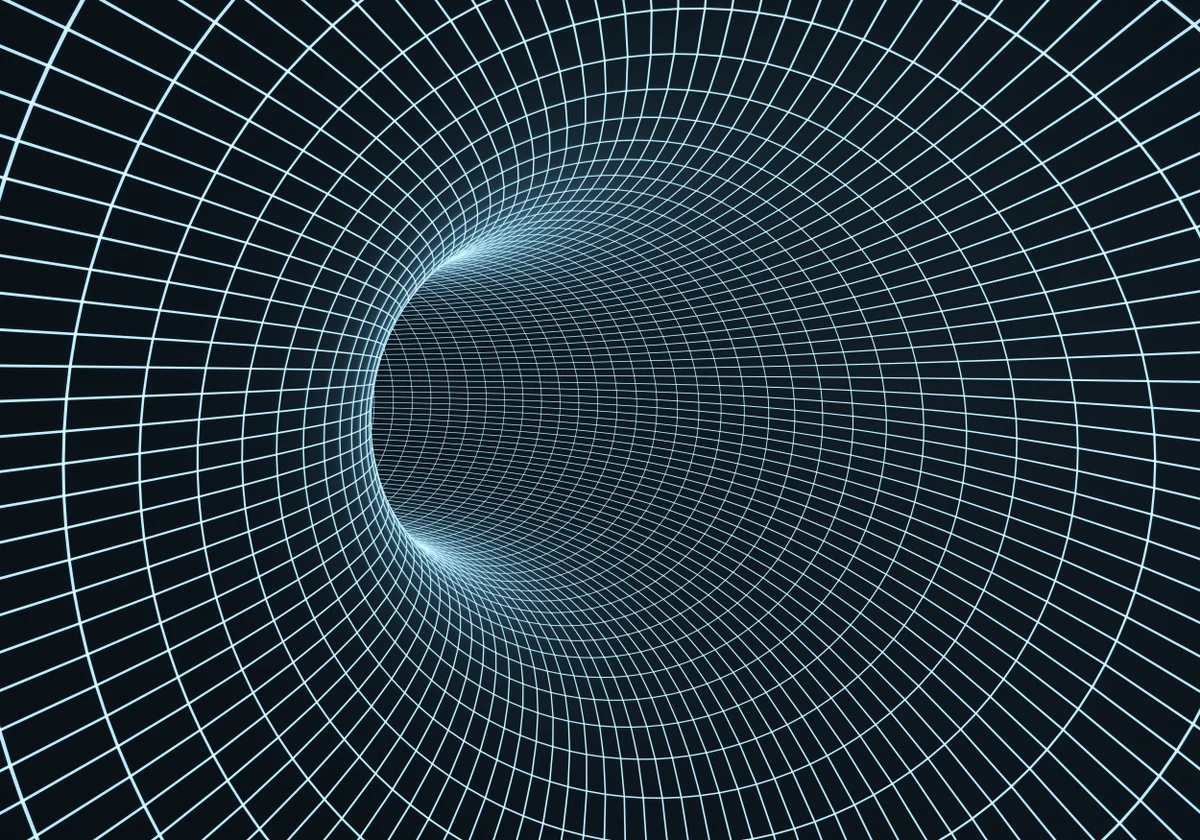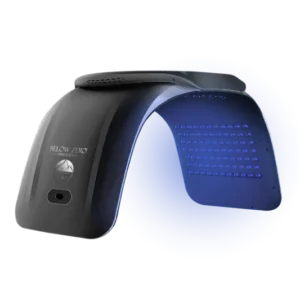Eternal Youth Through Time Travel

What if you could stay young forever? Exploring advanced scientific theories and speculative technologies say it could be theorically possible. Among these, three particularly intriguing methods are Time Travel, Regenerative Medicine, and Anti-Aging.
Each of these ideas presents a fascinating approach to defying the natural progression of time and preserving youthful vitality.

1. Time Dilation And The Fountain of Youth
Time dilation, a concept from Einstein’s theory of relativity, reveals how high-speed space travel could potentially allow us to stay younger. As an object approaches the speed of light, time for that object slows down compared to someone who remains stationary.
Although this phenomenon is theoretical for human space travel due to current technological limits, it provides intriguing possibilities for the future.
Understanding Time Dilation
Time dilation can be calculated using the formula:
t' = t × √(1 - v²/c²)
where:
- t’ = time experienced by the traveler
- t = time experienced by an observer at rest
- v = velocity of the traveler
- c = speed of light
Example Calculation
Let’s consider a spacecraft traveling at 90% of the speed of light (0.9c). Using the formula, we can calculate the time dilation effect:
Calculate the Time Dilation Factor:
t' = t × √(1 - (0.9c)²/c²)
t' = t × √(1 - 0.81)
t' = t × √0.19
t' ≈ t × 0.44
“This demonstrates that time for the traveler would progress at roughly 44% the rate of time experienced by someone on Earth.”
Pratical Example 1
To illustrate the effects of time dilation, consider a hypothetical space mission where you travel at 90% of the speed of light (0.9c). Time dilation, a phenomenon predicted by Einstein’s theory of relativity, suggests that time will pass differently for you compared to those who remain stationary on Earth. Let’s delve into this with a practical example:
Scenario: You embark on a space journey that lasts 10 years according to your onboard clock, while traveling at 0.9c.
Calculate the Time Dilation Factor
To determine how much slower time will pass for you compared to someone on Earth, use the time dilation formula:
t' = t × √(1 - v²/c²)
where:
t'= time experienced by you, the travelert= time experienced by an observer at rest (10 years in this case)v= velocity of the spacecraft (0.9c)c= speed of light
Substitute the values into the formula:
t' = 10 years × √(1 - (0.9)²)
t' = 10 years × √(1 - 0.81)
t' = 10 years × √0.19
t' ≈ 10 years × 0.44
t' ≈ 4.4 years
“According to this calculation, you would experience approximately 4.4 years of time passing on your spacecraft. This means that while your clock measures 10 years, the elapsed time for you would only be 4.4 years.”
This phenomenon of time dilation provides a compelling illustration of how high-speed space travel could, in theory, alter the passage of time for astronauts, offering a unique perspective on the relationship between time and aging. It exemplifies how relativistic speeds might enable a form of ‘time travel’ where travelers age more slowly compared to those on Earth, presenting a fascinating yet theoretical method for extending one’s youthful experience.
Determine the Time Passed on Earth
To understand how much time would pass on Earth while you are traveling, use the inverse of the time dilation formula:
t = t' / √(1 - v²/c²)
where:
t'= time experienced by you, the traveler (4.4 years)v= velocity of the spacecraft (0.9c)c= speed of light
Substitute the values into the formula:
t = 4.4 years / √(1 - (0.9)²)
t = 4.4 years / √(1 - 0.81)
t = 4.4 years / √0.19
t ≈ 4.4 years / 0.44
t ≈ 10 years
“During the same period, approximately 22.7 years would have passed on Earth. This means that while you age only 4.4 years, those who remain on Earth experience 22.7 years.”
In this example, you, the traveler, age much slower compared to those who stay on Earth. This time dilation effect highlights a profound consequence of traveling at relativistic speeds.
The significant difference in elapsed time demonstrates how high-speed travel could theoretically allow astronauts to experience much less passage of time compared to people on Earth. This principle could revolutionize our understanding of time travel and aging in the future, though practical application remains beyond our current technological reach.
The concept continues to inspire theoretical and scientific exploration, suggesting fascinating possibilities for future space exploration and human longevity.
Pratical Example 2
Imagine a hypothetical high-speed airplane traveling at 10% of the speed of light (0.1c) for a mission that lasts 10 years according to the onboard clock.
This example illustrates how time dilation affects aging, even at relatively low velocities compared to the speed of light.
Scenario: The aircraft travels at 10% of the speed of light (0.1c) for 10 years as measured on the onboard clock.
Calculate the Time Dilation Factor
To determine how much time would actually pass for you compared to an observer on Earth, use the time dilation formula:
t' = t × √(1 - v²/c²)
where:
t'= time experienced by the travelert= time experienced by an observer at rest (10 years)v= velocity of the aircraft (0.1c)c= speed of light
Substitute the values into the formula:
t' = 10 years × √(1 - (0.1)²)
t' = 10 years × √(1 - 0.01)
t' = 10 years × √0.99
t' ≈ 10 years × 0.995
t' ≈ 9.95 years
So, while your onboard clock measures 10 years, you would actually experience approximately 9.95 years due to time dilation.
Determine the Time Passed on Earth
To find out how much time would have elapsed on Earth during your 10-year journey according to your onboard clock, use the formula:
t = t' / √(1 - v²/c²)
where:
t'= time experienced by you, the traveler (10 years)v= velocity of the aircraft (0.1c)c= speed of light
Substitute the values into the formula:
t = 10 years / √(1 - (0.1)²)
t = 10 years / √(1 - 0.01)
t = 10 years / √0.99
t ≈ 10 years / 0.995
t ≈ 10.05 years
“Approximately 10.05 years would have passed on Earth during your 10-year flight.”
Calculating the Age Difference
To determine how much younger you are compared to people on Earth, convert the time difference into days:
Difference in time experienced: 10.05 years – 10 years = 0.05 years
Convert this time difference into days:
0.05 years × 365.25 days/year ≈ 18.25 days
Summary:
For the Traveler: You would experience approximately 9.95 years.
For Earth: 10.05 years would pass.
“You are approximately 18.25 days younger than you would be if you had stayed on Earth. This small difference illustrates how time dilation occurs even at lower speeds but becomes more significant at higher velocities.”

2. Regenerative Medicine and Nanobots
Imagine a future where aging is no longer a relentless march but a manageable process, thanks to the revolutionary advances in regenerative medicine and nanobots.
Regenerative medicine is transforming how we think about aging by harnessing the power of stem cells, tissue engineering, and gene editing. For instance, researchers are developing therapies that use stem cells to replace damaged tissues and organs. Picture receiving a treatment that rejuvenates your heart or liver, restoring it to a youthful state and potentially extending your vitality. This approach not only repairs damaged cells but also promotes the growth of new, healthy ones, effectively turning back the biological clock.
Then there’s tissue engineering, where scientists are creating bioengineered organs and tissues from scratch. Imagine a world where instead of waiting for an organ transplant, you could grow a new, fully functional organ tailored specifically to your needs. This technology could provide solutions to age-related organ degradation, helping us maintain peak health well into our later years.
Gene editing with tools like CRISPR is another groundbreaking development. This technology allows for precise alterations in our DNA, potentially correcting age-related genetic mutations and enhancing cellular repair mechanisms. Imagine editing your genes to enhance cellular resilience, reduce the risk of age-related diseases, and prolong youthful cellular function.
On the other hand, nanobots—tiny, microscopic robots—are poised to revolutionize personal healthcare on an unprecedented scale. These minuscule machines could perform cellular repairs that were once thought impossible. For example, nanobots could patrol your bloodstream, detecting and repairing cellular damage as it occurs. They might fix damaged DNA, neutralize harmful pathogens, or even remove cellular debris that contributes to aging.
Consider a scenario where you have nanobots equipped to perform regular maintenance on your body. These bots could identify the early signs of aging, such as the buildup of cellular waste or damage to critical cellular structures, and intervene before these issues become serious health problems. They could deliver targeted therapies directly to affected areas, vastly improving treatment outcomes and minimizing side effects.
In addition, nanobots could provide real-time monitoring of your health, sending detailed updates to your healthcare provider and allowing for instantaneous adjustments to your treatment regimen. Imagine having a personal health assistant that ensures everything is running smoothly inside your body, keeping you in peak condition and effectively slowing down the aging process.
By merging the advances of regenerative medicine and nanobot technology, we stand on the brink of a new era in which aging might become a manageable aspect of life rather than an inevitable decline. The future could hold the promise of extended healthspan and vitality, making the pursuit of youthful living not just a dream, but a tangible reality.

3. Anti-Aging Skincare Devices
Laser and Light Therapy Devices
Laser and light therapy devices are at the forefront of advanced anti-aging skincare, harnessing the power of light to rejuvenate and repair the skin.
Fractional lasers work by delivering tiny, focused beams of light to the skin’s surface in a fractional manner, meaning that only a portion of the skin is treated at any one time. This precision stimulates the skin’s natural healing process, encouraging the production of collagen and elastin, which are vital for maintaining youthful skin. Over several sessions, fractional lasers can significantly reduce wrinkles, fine lines, and age spots, providing a more even and youthful complexion.
LED light therapy, on the other hand, uses specific wavelengths of light to target different layers of the skin.
Red light therapy penetrates deeply to stimulate collagen production and improve skin elasticity, while blue light therapy targets the bacteria that cause acne, reducing inflammation and preventing breakouts.
Intense Pulsed Light (IPL) devices emit a broad spectrum of light that can address various skin issues. By selectively targeting pigmentation and blood vessels, IPL can diminish age spots, sun damage, and vascular lesions, offering a comprehensive solution for overall skin rejuvenation. Together, these light-based technologies offer versatile and effective treatments for a range of skin concerns, enhancing the skin’s texture and appearance over time.
Microcurrent Devices
Microcurrent devices have become popular in the realm of anti-aging skincare for their ability to deliver subtle yet effective results. These devices utilize low-level electrical currents to stimulate the facial muscles, mimicking the body’s natural electrical impulses.
The gentle electrical stimulation encourages the production of collagen and elastin, which are crucial for skin firmness and elasticity. As a result, microcurrent therapy can effectively lift and tone sagging skin, reducing the appearance of fine lines and wrinkles.
The treatment also enhances blood circulation and lymphatic drainage, which helps to reduce puffiness and improve overall skin radiance. Regular use of microcurrent devices can lead to a non-surgical facelift effect, offering a natural and non-invasive method to rejuvenate the face.
This technology provides a revitalizing experience that enhances muscle tone and skin texture, making it a favored choice for those seeking to maintain a youthful appearance without undergoing invasive procedures.
Ultrasonic Devices
Ultrasonic devices represent a significant advancement in skincare technology, leveraging high-frequency sound waves to penetrate the skin and enhance its condition.
These devices emit ultrasonic waves that vibrate at a frequency too high for the human ear to hear. As these sound waves travel through the skin, they increase the permeability of the skin cells, allowing for deeper and more effective absorption of skincare products.
This enhanced penetration means that serums, moisturizers, and treatments can reach deeper layers of the skin, amplifying their effectiveness. Additionally, ultrasonic waves stimulate cellular activity and collagen production, promoting the repair and renewal of skin tissues.
This dual action of improving product absorption and stimulating collagen synthesis helps to reduce the appearance of fine lines and wrinkles while improving overall skin texture. The non-invasive nature of ultrasonic devices makes them a convenient and effective tool for achieving a smoother, more youthful complexion.
Radiofrequency Devices
Radiofrequency (RF) devices offer a non-invasive approach to skin tightening and rejuvenation by using electromagnetic waves to heat the deeper layers of the skin.
This controlled heating stimulates the production of collagen and elastin, which are essential for maintaining skin elasticity and firmness. As the RF energy penetrates the dermal layers, it causes the skin to contract and tighten, reducing the appearance of sagging and wrinkles.
Over time, this leads to a more lifted and youthful appearance. RF technology also has applications beyond facial rejuvenation; it can be used to improve the texture and elasticity of the skin on other areas of the body, such as the abdomen and thighs.
Additionally, RF devices can aid in reducing the appearance of cellulite by promoting the remodeling of collagen and improving skin structure. The versatility and effectiveness of RF technology make it a popular choice for those seeking a non-surgical solution to skin aging and sagging.
High-Frequency Devices
High-frequency devices use electrical currents to address various skin concerns, including acne and aging. These devices operate by generating a high-frequency electrical current that is applied to the skin through a glass electrode. The electrical energy creates a mild, soothing heat that promotes blood circulation and accelerates cellular repair processes.
In the context of acne treatment, high-frequency currents have antimicrobial properties that help to eliminate acne-causing bacteria and reduce inflammation, leading to clearer skin. For anti-aging purposes, the heat generated by high-frequency devices stimulates collagen production and improves skin texture, helping to smooth out fine lines and wrinkles.
Additionally, high-frequency devices can enhance the absorption of skincare products, making treatments more effective. The combination of antimicrobial, anti-inflammatory, and skin-rejuvenating effects makes high-frequency devices a valuable tool in both acne management and anti-aging skincare routines.
Summary
Maintaining a youthful appearance and vitality involves a holistic approach that encompasses various aspects of health and wellness. A foundational component is making healthy lifestyle choices, which include consuming a nutrient-rich diet, engaging in regular physical activity, and getting sufficient rest. These habits support overall well-being, boost energy, and help preserve a youthful look.
In addition to lifestyle choices, advanced skincare technologies such as laser and light therapy, microcurrent devices, ultrasonic treatments, radiofrequency therapies, and high-frequency devices can play a significant role in enhancing skin health. These tools work by targeting specific skin issues, stimulating collagen production, and improving skin elasticity.
Furthermore, cutting-edge medical innovations like regenerative medicine and nanotechnology hold great promise for extending youthfulness. Regenerative medicine utilizes techniques such as stem cell therapy and gene editing to repair and rejuvenate tissues and organs, while nanobots offer the potential for microscopic cellular repairs and health monitoring. Additionally, maintaining mental and emotional health through practices like mindfulness, managing stress, and nurturing social connections contributes significantly to overall longevity and vitality.



2 comments